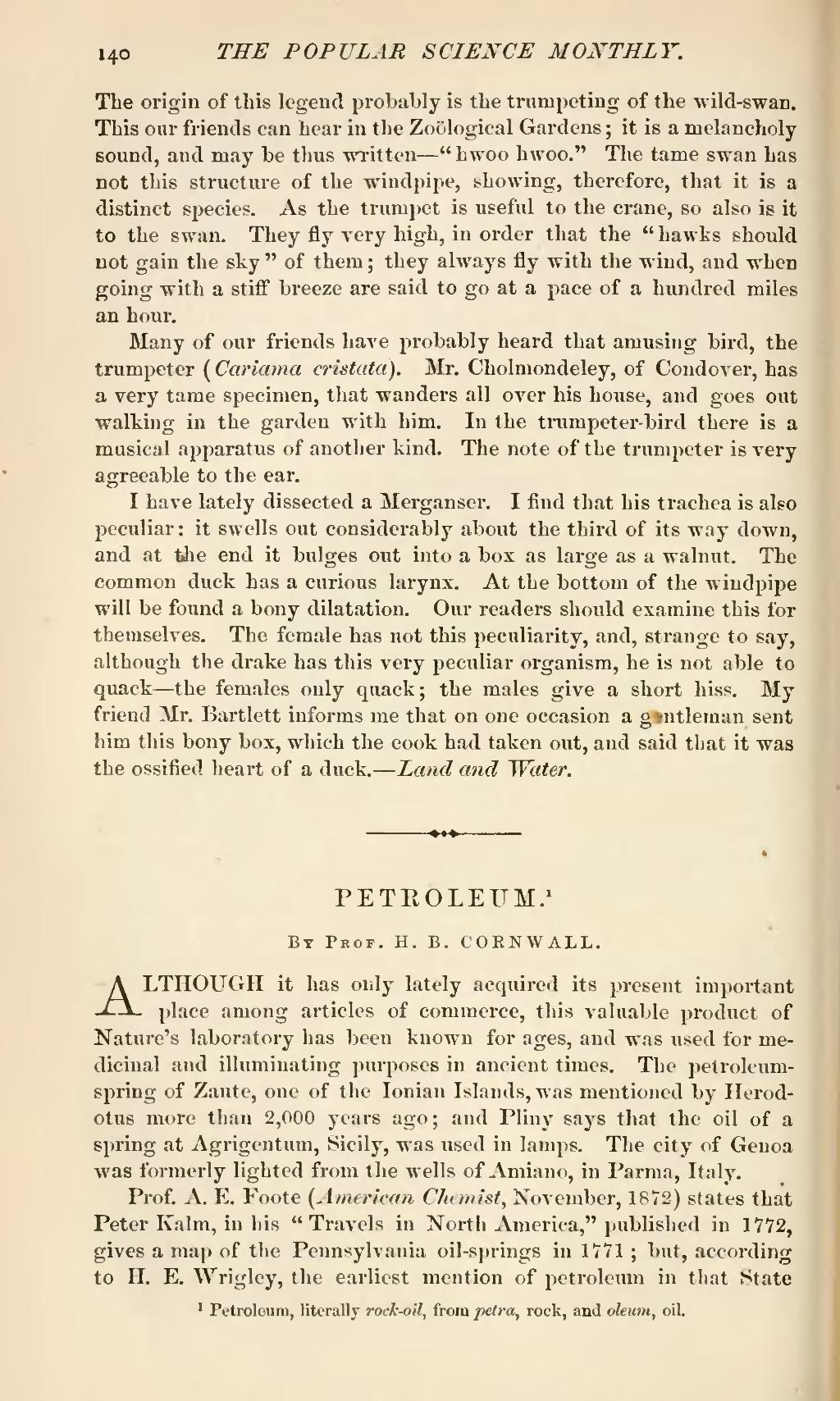The origin of this legend probably is the trumpeting of the wild-swan. This our friends can hear in the Zoölogical Gardens; it is a melancholy-sound, and may be thus written—"hwoo hwoo." The tame swan has not this structure of the windpipe, showing, therefore, that it is a distinct species. As the trumpet is useful to the crane, so also is it to the swan. They fly very high, in order that the "hawks should not gain the sky" of them; they always fly with the wind, and when going with a stiff breeze are said to go at a pace of a hundred miles an hour.
Many of our friends have probably heard that amusing bird, the trumpeter (Cariama cristata). Mr. Cholmondeley, of Condover, has a very tame specimen, that wanders all over his house, and goes out walking in the garden with him. In the trumpeter-bird there is a musical apparatus of another kind. The note of the trumpeter is very agreeable to the ear.
I have lately dissected a Merganser. I find that his trachea is also peculiar: it swells out considerably about the third of its way down, and at the end it bulges out into a box as large as a walnut. The common duck has a curious larynx. At the bottom of the windpipe will be found a bony dilatation. Our readers should examine this for themselves. The female has not this peculiarity, and, strange to say, although the drake has this very peculiar organism, he is not able to quack—the females only quack; the males give a short hiss. My friend Mr. Bartlett informs me that on one occasion a gentleman sent him this bony box, which the cook had taken out, and said that it was the ossified heart of a duck.—Land and Water.
| PETROLEUM.[1] |
By Prof. H. B. CORNWALL.
ALTHOUGH it has only lately acquired its present important place among articles of commerce, this valuable product of Nature's laboratory has been known for ages, and was used for medicinal and illuminating purposes in ancient times. The petroleum-spring of Zante, one of the Ionian Islands, was mentioned by Herodotus more than 2,000 years ago; and Pliny says that the oil of a spring at Agrigentum, Sicily, was used in lamps. The city of Genoa was formerly lighted from the wells of Amiano, in Parma, Italy.
Prof. A. E. Foote (American Chemist, November, 1872) states that Peter Kalm, in his "Travels in North America," published in 1772, gives a map of the Pennsylvania oil-springs in 1771; but, according to H. E. Wrigley, the earliest mention of petroleum in that State
- ↑ Petroleum, literally rock-oil, from petra, rock, and oleum, oil.

